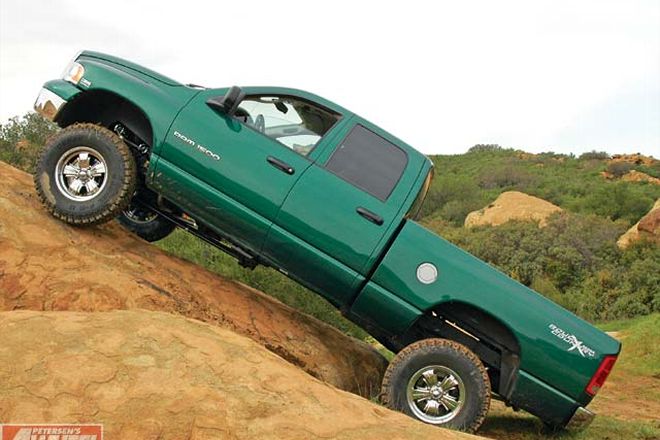
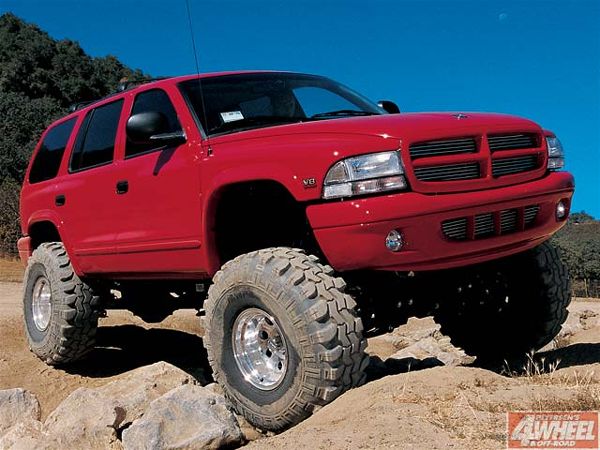 Jerrod Jones
Former Editor, Off Road
Photographers:
Christian Hazelcourtesy of Rough Country
Jerrod Jones
Former Editor, Off Road
Photographers:
Christian Hazelcourtesy of Rough Country
Dodge, no matter in solid axle or in independent front suspension form, has been ignored by many in the aftermarket when compared to those other two big American manufacturers because of the smaller numbers of these trucks made.Dodge's previous-generation Ram changed the way trucks are made today when it debuted in late 1993 with its enormously bulged hood - very reminiscent of the trucks our grandfathers drove. The Dakota was the first--and to this day the only midsized truck to offer an available V-8 under the hood. Dodge was the last to get rid of the solid axle under its 1/2-ton trucks. Dodge holds a record for the fastest truck in the world (the SRT-10). And Dodge has the Cummins torque monster. You'd think more attention would be paid to trucks that are so memorable.
Since you've decided to join the minority and own a Dodge, what do you do now to modify it? Do you know your potential weak spots in the trucks? And what makes owning your Dodge more appealing than owning something else? Let's get started on what you have to deal with when modifying the suspension on your IFS Dodge Ram or Dakota.
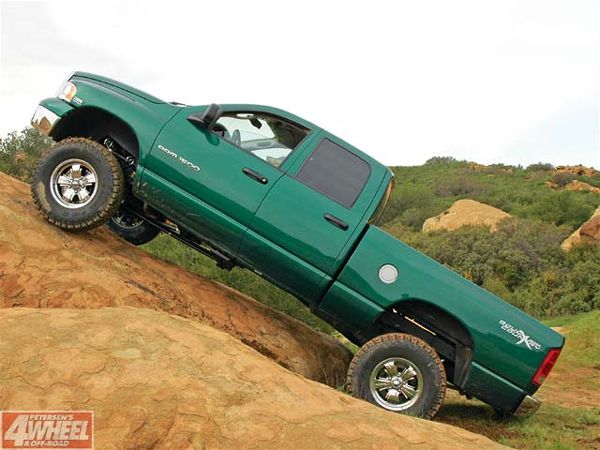
2002-and-Up Ram IFS
The current 1/2-ton Ram debuted in late 2001 sporting an independent front suspension, much to the dismay of die-hard off-road fans and aftermarket companies that were skating by using essentially the same lift for 1/2-ton, 3/4-ton, and 1-ton trucks. The truck that had been the last to give in to a 1/2-ton independent suspension had finally yielded. Their suspension is similar to the Dakota but, in our opinion, a little superior. And why not? They had four more years to think about it.
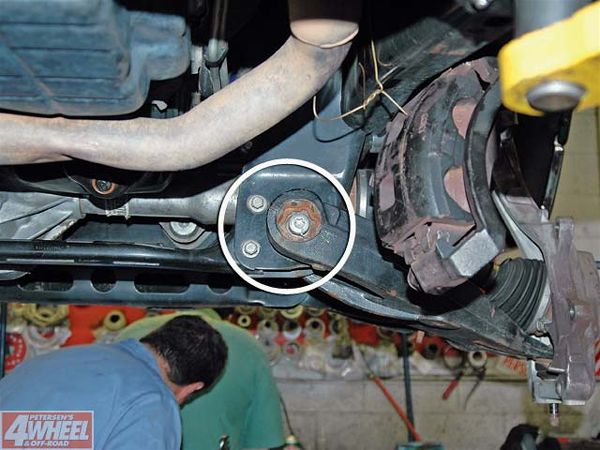
The Good
The Ram is still a torsion-bar truck, and not a coilover like we'd opt for if given the choice, but the stock torsion bar has a good stiff rate and handles off-road duty without sagging. It is located in direct line with the pivot point of the lower A-arm on the frame, giving a more constant spring rate and less bind than a design where the torsion bar mounts a few inches out (from the pivot point) on the lower A-arm.
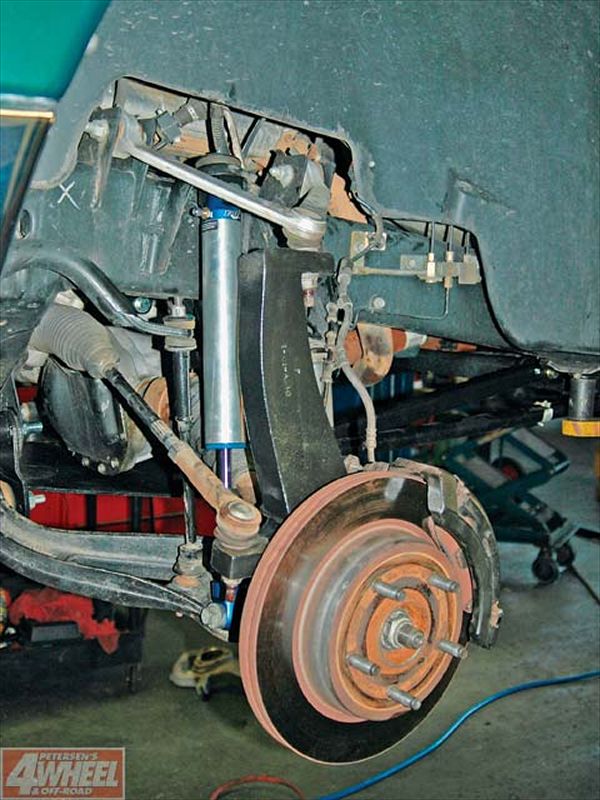
The Good
On fullsize IFS Rams, the independent suspension travels straight up and down when cycling. This is significant when compared to other IFS trucks that have the suspension tilted at a slight backward angle. This is actually ideal for a smoother ride, but not worth the trade-off since the Ram's suspension travels straight up and down, the tire does not move toward the rear of the front fender, a very common tire rubbing spot on most trucks. If the suspension were to travel toward the rear, you would not have as much tire-fender clearance when cycling the suspension.

The Bad
Unfortunately nothing is indestructible, especially 1/2-ton IFS. This is the main reason most people fear IFS, not because of its lack of articulation or ability to mimic a solid axle, but because they're going to break something with big tires. Most people will probably not outdrive an independent suspension off road, but there is a good chance they could break something on the trail or street. The components in the front end, though impressive as a whole design, tend not to hold up to severe abuse or big tires without premature wear and/or breakage. Pictured is the aftermath of driving an IFS front end harder than it should be driven. The lower A-arm snapped off right at the ball joint, the upper A-arm bent, and the tie rod bent as well.
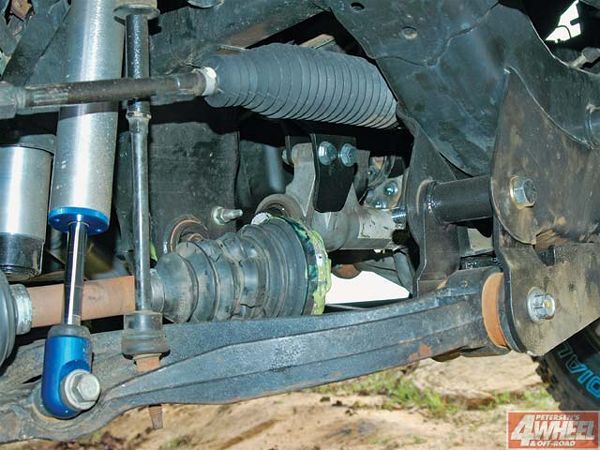
Another thing to watch out for on some lifted Dodge Rams are the CV shafts pulling apart when the suspension is completely drooped out. When pulled out, you can reassemble them, but you will have to do some wrenching to make it possible and it'll take some time. A few aftermarket companies have recognized this and are inventing solutions right now.
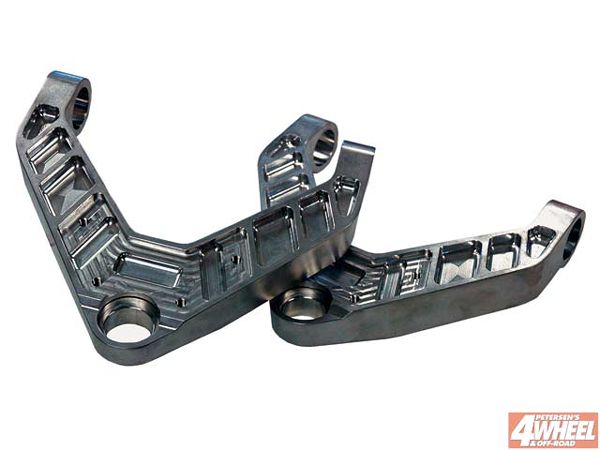
The Options
Rough Country has recently taken an aggressive lunge at the IFS on the Rams. By the time you read this, the company will be offering a billet-aluminum upper A-arm to replace the weak factory arm. It's also working on stronger CV shafts with more angularity that will replace the factory CV shafts, making a jump in fullsize aftermarket IFS beefing.
1997-2004 Dakota/Durango IFS
In late 1996 when the 1997 Dakota debuted, it did not get the limelight it deserved and instead was touted by many as a smaller, cheaper version of the fullsize Ram that had made such an impact just a few years earlier. The Dakota had a very impressive body design itself, but it was too reminiscent of the fullsize Dodge to make its own mark without someone commenting about being second best to its big brother. But the Dakota (and later Durango in 1998) was no slouch. It had an available V-8 (only midsize to offer one) and could even be gotten as an R/T package with a 5.9L V-8, making the truck a screamer. The platform used a torsion-bar design, but did not mount them directly in line with the lower A-arm's pivot point like on the 2001-and-up 1/2-ton Ram. In 2000, the Dakota/Durango platform switched from a Saginaw steering box to a rack-and-pinion, at the same time also slightly changing the ball-joint design.
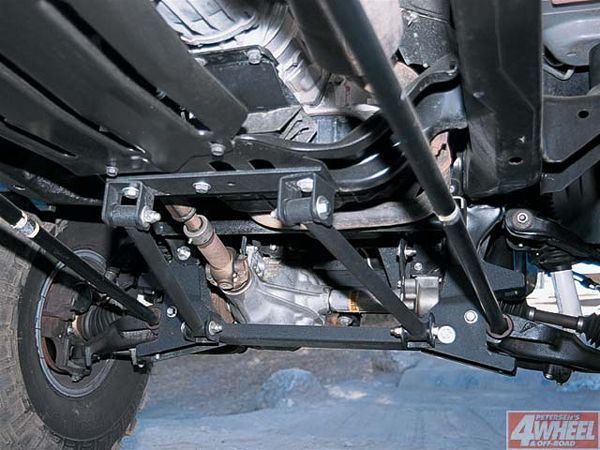
The Good
The good news is that lift kits are available and companies (right now) are starting to address the fact that the Dakota has been around since 1997 with V-8s, has largely been ignored by the aftermarket, and is starting to become very affordable. We predict that you will be seeing a lot more Dakotas on the trails soon, with many more products offered in the aftermarket, since they make great platforms for off-road use. They're bigger than compact trucks, they come from the factory with a V-8, and they're smaller than fullsizes so they'll fit more easily on the tight trails. Pictured here is the front of Tuff Country's 5 1/2-inch suspension lift for the 1997-1999 Dakota and Durango, currently the biggest IFS lift kit we know of for these trucks. Rough Country is working right now to produce a 6-inch lift that incorporates an extra pivoting arm and no torsion-bar drop.
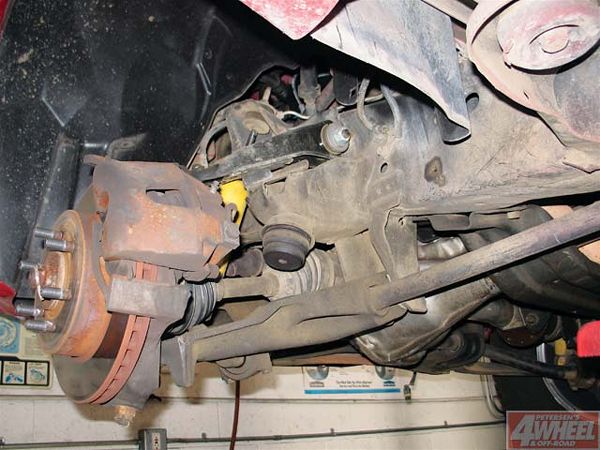
The Bad
The changes Dodge made to the Dakota/Durango in 2000 did not make some people happy. The 2000 models received a rack-and-pinion steering and a changed ball joint design, and the 5.2L Magnum V-8 was replaced with a newly designed 4.7L V-8 that had found its way into the Grand Cherokee a year earlier. The engine was an OK swap with better fuel economy, and the rack-and-pinion was a nice upgrade with the exception of making the 1997-1999 suspension lifts unusable. But the ball joints got Dodge some hate mail. In fact, a little more than hate mail: There was a nationwide recall of all midsize Dodge truck ball joints produced from 2000 to 2003. The redesigned recall replacements apparently solve the problem, but nonetheless left a bad taste in people's mouths.

The Options
Your option for hard-core Dakota suspension and drivetrain stuff is ... to wait. Much more stuff will be coming soon for these trucks, but you do have some options right now. Tuff Country produces a 5 1/2-inch lift for the 1997-1999 Dakota/Durangos and might have one out for the 2000-and-up one in the future. Rancho has a 3-inch kit for both the 1997-1999 and 2000-2004 configurations, and Rough Country will have a lift and CV-shaft package available soon. We wish we had more Dakota stuff for ya, but we know we'll get more soon.